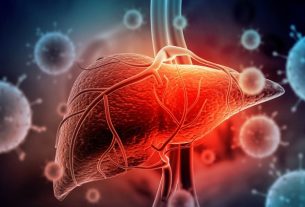Dementia is a condition that causes progressive changes in areas of the brain, resulting in changes in memory, behavior, language and personality, which can directly interfere with quality of life.
Although the onset of dementia can be caused by a variety of factors, it is most often associated with aging. Still, it is normal for the causes to vary depending on the type of dementia presented.
Ideally, dementia should always be identified as early as possible, to begin appropriate treatment and try to delay the progression of the disease, ensuring a better quality of life. Therefore, whenever there are symptoms indicative of dementia, it is important to consult a general practitioner or neurologist.

8 main types of dementia
According to the cause and symptoms presented by the person, dementia can be classified into several types, the main ones being:
1. Alzheimer
Alzheimer’s is the main type of dementia, characterized by the progressive degeneration of neurons and impairment of cognitive functions.
Possible causes: The development of Alzheimer’s is a consequence of a set of factors, such as genetics, aging, physical inactivity, head trauma and smoking, for example.
Main symptoms: Symptoms tend to develop in phases, with the initial symptoms being related to difficulty finding words to speak and making decisions, lack of attention and impairment of memory, concentration, attention and reasoning. See how to identify the symptoms of Alzheimer’s.
How the diagnosis is made: The diagnosis of Alzheimer’s is made through the evaluation of the symptoms presented by the patient and clinical and family history. In addition, the neurologist can request tests that identify brain changes, in addition to analyzing the cerebrospinal fluid to check the accumulation of beta-amyloid proteins that occurs in Alzheimer’s.
It is also recommended to carry out reasoning tests, which must be carried out by a neurologist or geriatrician, with the aim of verifying brain impairment. See how the rapid Alzheimer’s test is performed.
2. Vascular dementia
Vascular dementia is the second most common type of dementia, behind only Alzheimer’s, and occurs when the brain’s blood supply is impaired due to cerebrovascular or cardiovascular problems, resulting in brain changes and, consequently, dementia. Understand better what vascular dementia is, its symptoms and how to treat it.
Possible causes: The main cause of this type of dementia is stroke.
Main symptoms: In this type of dementia there is great cognitive impairment, making it very difficult for the person to carry out simple day-to-day activities, resulting in dependence. Furthermore, as the disease progresses, the person may become malnourished, have greater susceptibility to infections and have difficulty swallowing, for example.
How the diagnosis is made: The diagnosis of vascular dementia is made through neurological imaging tests, such as magnetic resonance imaging and computed tomography, in which brain changes are verified resulting from a decrease in blood supply to the brain.
3. Parkinson’s dementia
Parkinson’s dementia appears as Parkinson’s disease worsens, being a consequence of changes that occur at the brain level, as there are changes related to the person’s cognition and behavior.
Possible causes: It happens in people with advanced Parkinson’s. It is not yet known why this type of dementia arises, but it is possible that it is related to the wear and tear of regions of the brain responsible for the production of neurotransmitters.
Main symptoms: In addition to the characteristic symptoms of Parkinson’s, such as tremors and muscle rigidity, there is a progressive loss of memory and changes in reflexes due to the wear and tear of regions of the brain responsible for the production of neurotransmitters. See what the first symptoms of Parkinson’s are.
How the diagnosis is made: The diagnosis of Parkinson’s disease is made by the neurologist through the signs and symptoms presented by the patient and imaging tests, such as magnetic resonance imaging and computed tomography of the skull, for example. In addition, blood tests may be requested that may exclude other diagnostic hypotheses.
4. Senile dementia
Senile dementia occurs more frequently in people over 65 years of age and is characterized by the progressive and irreversible loss of intellectual functions, such as memory, reasoning and language, and is therefore one of the main causes of disability in the elderly.
Possible causes: Although it can occur naturally, this type of dementia is often a consequence of neurodegenerative diseases, such as Alzheimer’s or Parkinson’s disease. Furthermore, it may be the result of frequent use of some medications, such as sleeping pills, antidepressants and muscle relaxants. Find out more about senile dementia.
Main symptoms: The main symptoms related to senile dementia are disorientation, memory loss, difficulty making decisions, forgetting simple things, weight loss, urinary incontinence, difficulty driving or doing activities alone, such as shopping, cooking or bathing, for example. .
How the diagnosis is made: The diagnosis of this type of dementia is made through laboratory tests, to exclude other diseases, and imaging tests, such as computed tomography of the skull and magnetic resonance imaging, for example, to evaluate brain function. Furthermore, the diagnosis must be made based on the patient’s complete clinical history and tests to assess memory and mental state, in addition to the degree of attention, concentration and communication.
5. Frontotemporal dementia
Frontotemporal dementia or FTD is a type of dementia characterized by the atrophy and loss of nerve cells in one or both of the frontal and temporal lobes of the brain. The frontal lobes are responsible for regulating mood and behavior, while the temporal lobes are related to vision and speech. Therefore, depending on where there is brain degeneration, symptoms may vary.
Main symptoms: The main symptoms related to FTD are changes in social behavior, personality changes, changes in language, and limited speech. Furthermore, the person may repeat phrases spoken by other people several times and not remember the names of objects, only being able to describe them.
How the diagnosis is made: FTD is diagnosed through psychiatric evaluation, in which behavioral changes and changes related to social perception are verified. In addition, some tests may be requested, such as brain imaging and electroencephalogram. Find out how the electroencephalogram is performed.
6. Pick’s Dementia
Dementia or Pick’s disease, also known as PiD, is a type of frontotemporal dementia characterized by excess Tau proteins in neurons called Pick’s cups. Excess proteins usually occur in the frontal or temporal lobes and are one of the main causes of early memory loss, which can begin after the age of 40.
Main symptoms: Pick’s disease’s main symptoms are decreased reasoning ability, difficulty speaking, mental confusion, emotional instability and personality changes.
How the diagnosis is made: The diagnosis of Pick’s disease is made through the analysis of the behavioral symptoms presented by the person, which is normally done through psychological tests, in addition to imaging tests, such as magnetic resonance imaging, for example. In addition, the doctor may request an assessment of the concentration of Tau protein in nervous system fluids, and the collection of cerebrospinal fluid may be indicated.
7. Dementia with Lewy bodies
Dementia with Lewy bodies corresponds to the impairment of specific regions of the brain due to the presence of protein structures, known as Lewy bodies, which develop within brain cells and cause their degeneration and death, resulting in dementia. This type of dementia is more common in people over 60 years of age and can occur simultaneously with Alzheimer’s disease, for example. Learn how to identify and treat dementia with Lewy bodies.
Main symptoms: People diagnosed with this type of dementia present as their main symptoms loss of mental abilities, mental confusion, disorientation, hallucinations, tremors and muscle stiffness. Normally mental changes appear first and as there is greater brain impairment, movement changes appear and mental confusion becomes more severe.
How the diagnosis is made: The diagnosis of dementia with Lewy bodies must be made by a neurologist through the evaluation of symptoms, clinical history of the patient and family and imaging tests, such as computed tomography or magnetic resonance imaging, with the aim of identifying degeneration in some parts of the brain.
8. Alcohol dementia
The association between excessive consumption of alcoholic beverages and a greater predisposition to early dementia is still being studied, however it is already proven that excessive consumption of alcoholic beverages interferes with memory, cognitive and behavioral capacity. This is because alcohol can have a harmful effect on nerve cells, altering their functioning and resulting in symptoms of dementia, for example.
Furthermore, if excessive alcohol consumption is associated with a diet low in vitamin B1, irreversible brain damage may occur. See which foods are rich in vitamin B1.
Main symptoms: Learning difficulties, personality changes, decreased social skills, difficulty in logical thinking and changes in short-term memory are characteristic symptoms of dementia caused by alcohol.

Sign up for our newsletter and stay up to date with exclusive news
that can transform your routine!
Warning: Undefined array key "title" in /home/storelat/public_html/wp-content/plugins/link-whisper-premium/templates/frontend/related-posts.php on line 12
Warning: Undefined array key "title_tag" in /home/storelat/public_html/wp-content/plugins/link-whisper-premium/templates/frontend/related-posts.php on line 13



